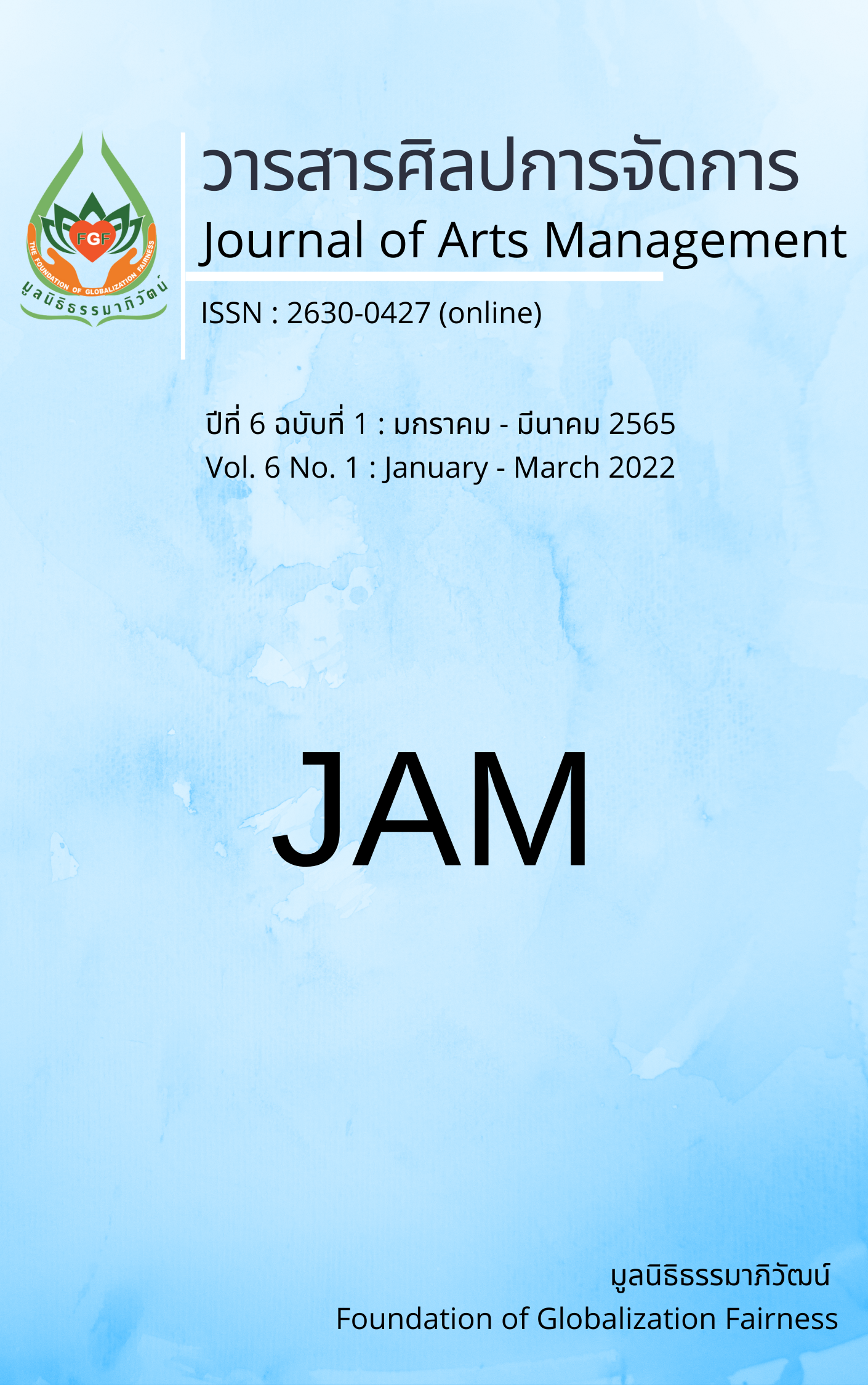Buddha Statues Across the Border: Myths, Constructions and Controversies of Sacred Space in the Current Socio-cultural Context
Main Article Content
Abstract
Most of the Buddha statues in Lan Xang art during the 21st - 23rd Buddhist centuries are considered unique, as most of them were built by the king. At present, many of these Buddha statues have been brought to be enshrined in Thailand. This research article therefore had two objectives: 1) to study the myths of the summoned cross-border Buddha statues, from the Lan Xang Kingdom to be enshrined in Thailand; and 2) to study constructions and controversies of sacred space in the current socio-cultural context. This research was qualitative research by studying documents and field data in Nong Khai, Yasothon, and Bangkok provinces of Thailand. The research tools were observations, in-depth interviews, and small group discussions. The results showed that there are two periods of myths about Buddha statues across the border: 1) The Buddha statues were brought into the Krung Thon Buri kingdom once, namely Phra Kaew Morakot and Phra Bang; 2) the Buddha statues were brought into the Rattanakosin Kingdom twice, including Phra Suk, Phra Serm, Phra Sai, Phra Sae Kham, and so on. But there are many Buddha statues that do not clearly have details on the crossing of the border. There is only one inscription that says, “was summoned from the Lan Xang Kingdom.” For the construction and controversies of the sacred space, they found that Phra Suk and Phra Sai were brought to build and scramble for a variety of sacred spaces. But Phra Serm is rarely mentioned in the border areas. There is a connection between the myths and other phenomena such as Naga fireballs, holy water, etc. These areas have been made into “Sacred Areas”, and they are popular for Buddhists to visit, which has led to the creation of various amulets.
Article Details

This work is licensed under a Creative Commons Attribution-NonCommercial-NoDerivatives 4.0 International License.
Views and opinions appearing in articles in the Journal of Arts of Management It is the responsibility of the author of the article. and does not constitute the view and responsibility of the editorial team I agree that the article is copyright of the Arts and Management Journal.
References
Boonrawd, S. (2002). Buddhist arts of Laos. (2nd ed.). Saitarn.
Channgam, S. (1991). Theology. Thai Wattana Panich.
Chaophraya Thiphakorawong. (2012). The Chronicle of Rattanakosin, Rama 1-4, Vols. 1-2. Sri Panya.
Chuwichian, P. (2014). Lao arts. Matichon.
Duangwilai, C. (2013). Myths of Buddha Image in Thai-Laos Bordering Communities: Conveying of Cultural Meaning and the Role of Enhancing Social Relationship. Faculty of Humanities and Social Sciences, Mahasarakham University.
Eliade, M. (1987). The Profane, the nature of religion. Harcourt.
Fuengfusakul, A. (2008). Religious anthropology basic concepts and theoretical arguments. Department of Social and Anthropology, Faculty of Social Sciences, Chiang Mai University.
Hall, S. (1997). Representation: Cultural representations and signifying practices. Sag Publications.
Hongsuwan, P. (2011). The legend of the Lanna Buddha image: The power of wisdom in belief and relationship with local. Research Fund Office.
Kaewthep, K. (2005). Content theory group, substance and meaning, in the collection of subject philosophy of communication arts and theory of communication unit 12. Sukhothai Thammathirat Open University.
Kolb, E. J. (1978). A framework for political analysis. Prentice-Hall.
Sumethee, T. (2016). Phra Suk Chedi and Phra Thep Sangworayan Museum. Santisiri.
Laorit, Y., Champadaeng, S., & Paengsoi, K. (2015). Temple Tour: Guidelines for Developing the Potential of Cultural Eco-Tourism Along Mekong Riverside, Nongkhai Province. Journal of Graduate Studies, 12(57), 165-176.
Nawabut, M. (2001). Viewpoints of higher education students in Nakhon Ratchasima province on sacred things and life after death. Nakhon Ratchasima Rajabhat University.
Phra Dhammarachanuwat. (2008). Urangkanita (11th ed.). June Publishing.
Poonsook, T., Dangsakit, D, Klakong, N., Chekor, M., & Wuttipradit, H. (2018). Wat Chedi (Ai Khai) as a “The sacred space” in the tourism context. http://human.skru.ac.th/husoconference/conf1/po36.pdf
Royal Institute. (2006). Dictionary of the Royal Institute. Nanmeebooks.
Saisingha, S. (2012). Chedi, Buddha image, Hoop Taem, Sim, Lao and Isan art. Museum Press.
Santasombat, Y. (2015). Borderland and diversity of belief systems: Contested sacred spaces and symbolic dominance. The Thailand Research Fund.
Somdej Krom Phraya Damrong Rajanuphap. (2005). The legend of important Buddha images. Matichon.
Srisam-ang, S. (2002). Order of Lao Kings. Fine Arts Department.
Thaweesit, S. (2009). Mekong River Basin Studies: Rivers, People, Borders, Culture, Trade, Politics. Journal of Liberal Arts, Ubon Ratchathani University, Special edition, 7-16.
Tourism Authority of Thailand. (2018). Worship the sacred Enhance the auspicious life, pay respect to the holy Buddha 9 Sos. Tourism Authority of Thailand, Udon Thani Office.
Wanliphodom, S. (2003). Basin of Isan civilization (4th ed.). Matichon.
Wanliphodom, S. (2020. July 10). Sacred areas in the early days of Siam. The origin of the “Temple”, the origin of the community. https://lek-prapai.org/home/index.php
Wannasiri, N. (1997). Social and cultural anthropology. Faculty of Social Sciences Kasetsart University.
Wat Tha Khok Ruea. (2019). History of Luang Por Thongsaen. Masanook creative.


